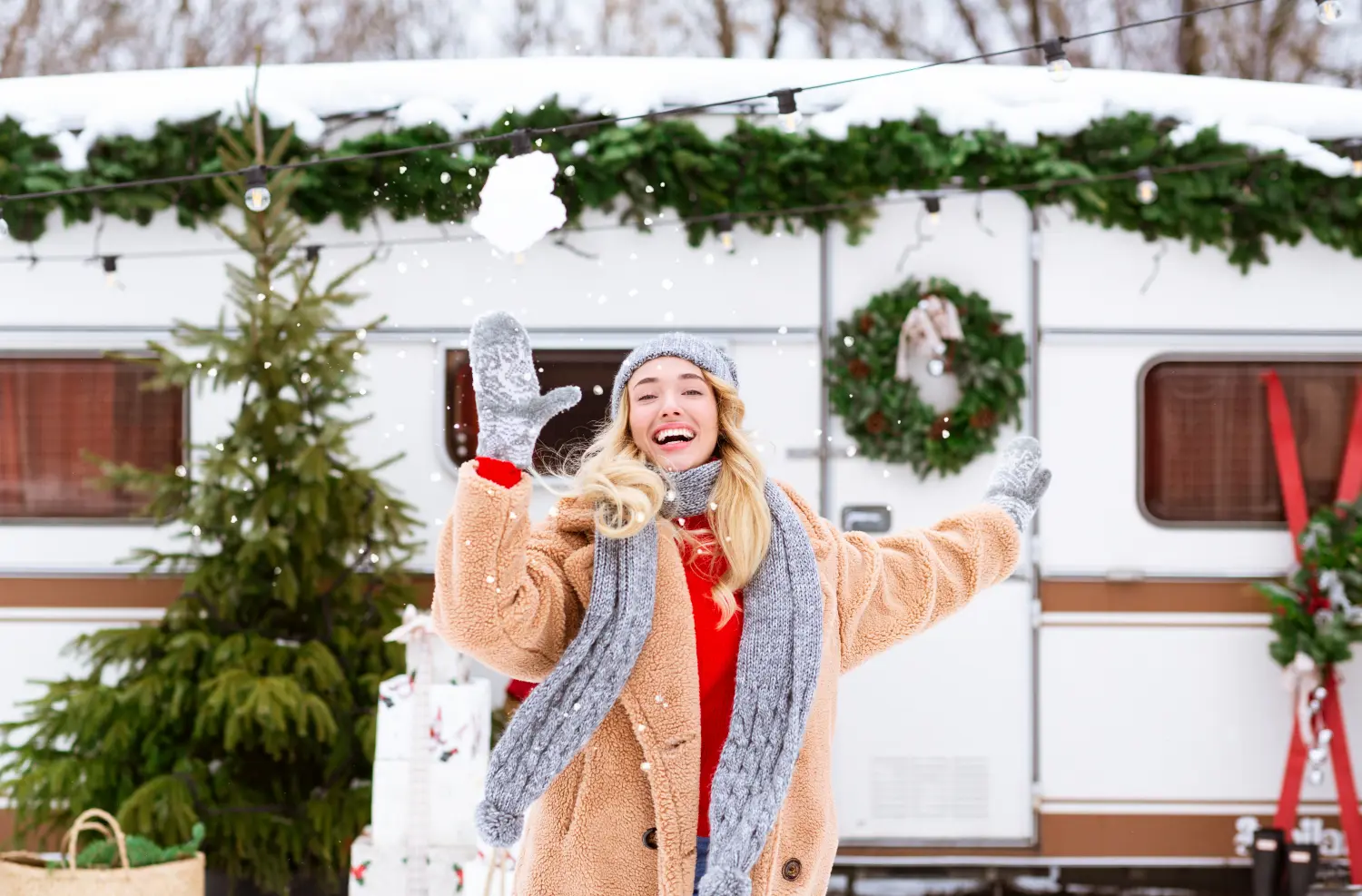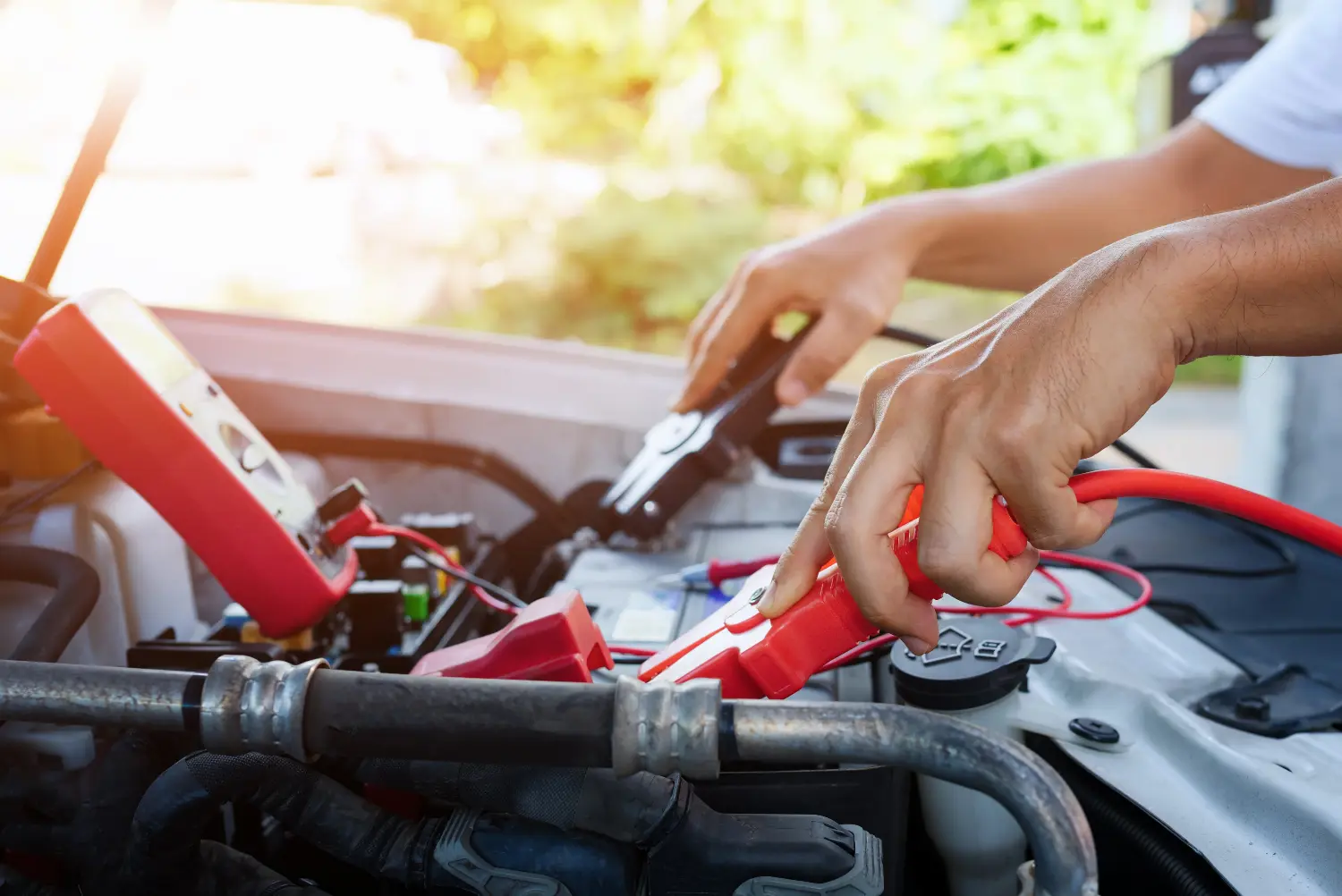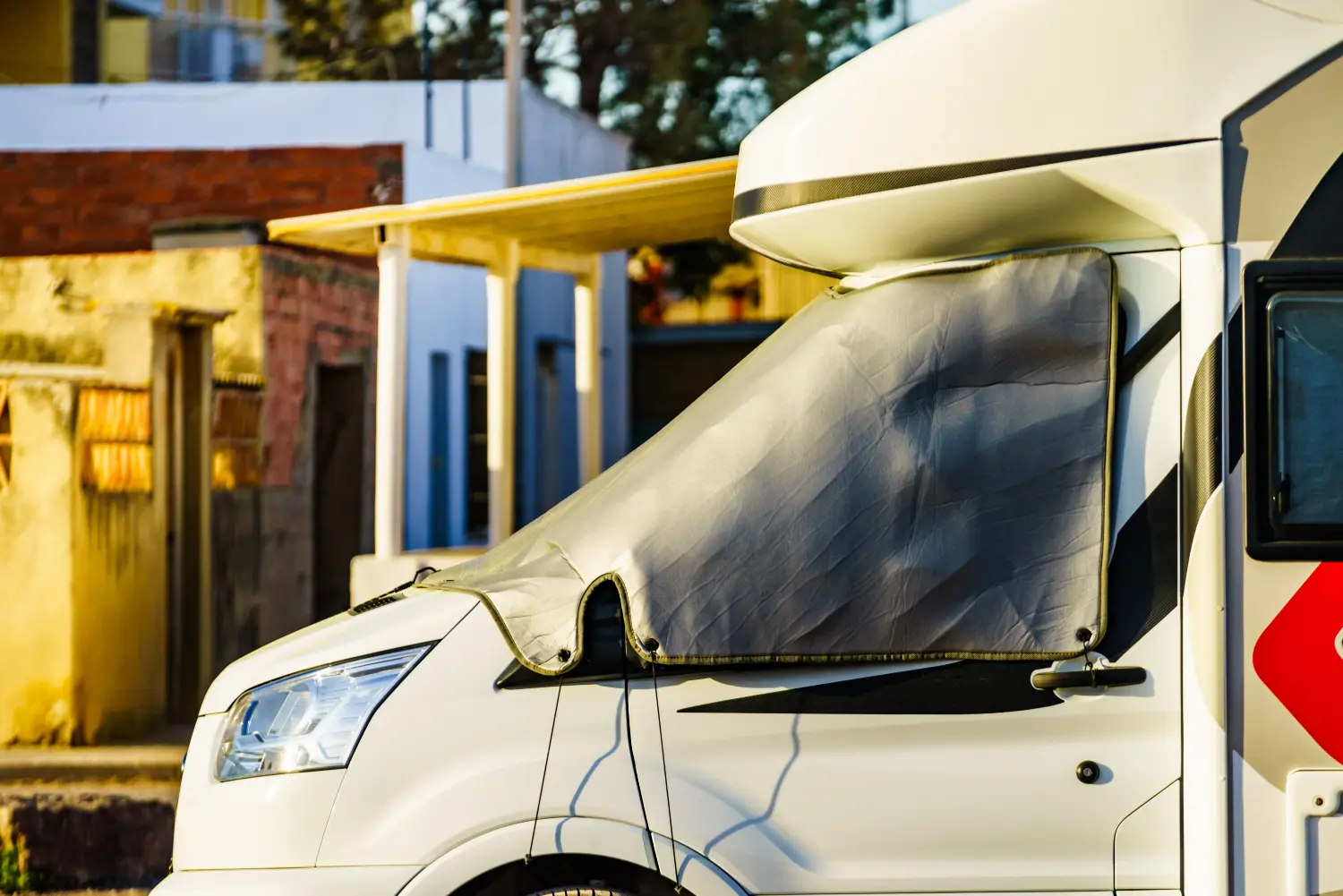Top 10 tips to prepare your campervan for winter
11 November 2022

Whether you’re heading out on a winter wonderland trip or planning to keep your camper parked up during the colder months, you need to prepare it for the elements. Find out how with these handy tips.
With the rising cost of living across the UK, more Brits opted for a staycation this summer, with many dusting off their VWs or buying classic campers for a fun-filled camping trip with the family.
Now the nights are drawing in and it’s getting chilly, it might be tempting to book a holiday somewhere scorching, but don’t pay for those flights just yet!
A few days away in your camper during winter could be the cosiest break you’ve ever had. But that doesn’t mean you can all hop in right away and set off – you need to make your home on wheels winter-ready.
Not sure where to start?
We share how to prep your vehicle for a holiday around the UK this winter and ways to keep it protected from the elements if you plan to stay put.
Don’t forget to protect your maintenance efforts with campervan insurance for your vehicle. Contact the insurance specialists at Lancaster Insurance Services to find a policy to suit you and your home on wheels.
10 tips to make your campervan winter-ready
If you’re set on heading out on a blustery adventure this chilly season, you’ll need to take some time to make sure your home on wheels is prepared.
There are more risks on winter roads, and not performing the checks and maintenance below could see you getting into trouble and claiming on your campervan insurance.
1. Check and inflate your tyres
Before driving anywhere this winter, check for wear and tear on your tyres. The legal tread limit is 1.6mm, but National Tyres recommends changing them if it goes below 3mm.
You might even want to consider switching them out for winter tyres, which Kwik Fit says are safer when temperatures drop below 7°C.
Chilly weather also means tyres lose air faster, so make sure you check the pressure and inflate if necessary.
2. Check brakes and fluid
If your brake fluid is nearing the minimum mark, you’ll need to top it up. Carefully pour it up to the max line without spilling any. Brake fluid is corrosive and could eat away at your paintwork – that’s the last thing any classic camper owner wants!
If the fluid is a tea-like colour, it’s time to get the system bled by a professional. Let them know if your vehicle pulls to one side when braking or if you're having trouble with the handbrake to get those fixed, too.
Your camper will take longer to stop during the colder months, so you need them to be in top working order.
3. Test lights and keep the windscreen clean
With longer nights and more fog, sufficient visibility is key to driving safely. There are a few tests and checks you can do to make sure you can see properly during winter:
- Ask a friend or family member to stand outside your camper while you turn on your lights and replace any faulty bulbs.
- Check your wipers are working well and top up the windscreen washer fluid if it's getting low. Faulty wipers can mean you fail an MOT, rendering your campervan insurance invalid, so you should perform this check often.
- In harsh conditions, fallen leaves and even snow can build up on your windscreen, so clear it all off before leaving home.
- A chipped windscreen is a huge hazard, especially during winter as the glare from the sun can cause dazzle. You will need to get this dealt with as soon as possible by a professional.
4. Get your campervan serviced
If you haven’t had a service in the last year, now’s a good time to give your campervan a once-over. This routine check-up looks at your engine and other parts to make sure your vehicle runs smoothly.
You can expect the mechanic to check:
- Engine oil and filter
- Fluid and coolant levels
- Tyres
- Exhausts
- Car battery
- Suspension
- Lights
- Brakes
- Steering
- Bodywork
If anything isn’t working as well as it should, you have time to fix it before setting off on your winter holiday.
5. Invest in a back-up battery
When you go camping in cold weather, your battery will be working overtime, so you might want to fit a new one before you go away.
It’s also a good idea to pack a spare one to make sure all those film nights in and extra lights don’t leave you in trouble when on the road.
6. Keep an emergency kit in your vehicle

While campervan insurance and breakdown cover are important to protect you in case of an accident or damage, it’s a good idea to keep an emergency kit onboard to make you feel extra secure.
Make sure you always have the following in your camper:
- Ice scraper and de-icer
- High-vis jacket
- Spare warm clothes and blanket
- Torch and spare batteries
- Boots with a strong grip
- Jump start cables
- A tow rope
- A fuel can
- First aid kit
- Two reflective warning triangles
- Shovel
- A map
- Sunglasses
- Phone charger
7. Check the heating
If you don’t fancy the idea of icicles forming on the inside of your windows and evenings shuddering under the covers, you must check that the heating is efficient.
Don’t have a heating system in your classic camper? That’s not a problem. Most campervan models can have one installed! You’ll need to consider the size of your camper and the layout, but there are 5 main options for a heating system installation:
- Gas
- Petrol
- Electric
- Diesel
- Small wood burner
Don’t worry if you can’t get something installed now. You can also take a small portable heater that’s safe for you to leave on for extended periods, like a blow heater or oil filled radiator.
8. Protect your water and gas
Imagine spending the most wonderful time in your cosy camper only for your water supply to freeze or the gas not to turn on to cook dinner! Could there be a worse way to spoil your holiday?
To prevent this worst-case scenario from happening, make sure your water tank is well-insulated and keep a small jug constantly filled inside, just in case.
For heating the stove, propane works much better in cold conditions than butane, so switch your tanks, if necessary, during winter. You can find out more about the use of butane and propane on the Calor website.
9. Take measure to keep the warmth in
An excellent heating system is no good if all the air is going to escape quickly. To keep your camper as warm and toasty as possible, there are a few things you can do:
- Seal all the cracks around windows, doors, and vents to prevent draughts.
- Put silver screens up on your windows as additional thermal protection.
- Put a rug on hard floors to make it soft and warm on your feet.
- Use thick curtains and close them as soon as the sun goes down.
10. Clean and polish the exterior
Harsh conditions during this frosty time of year put your classic camper at greater risk of exterior damage, especially to the paint and bodywork.
Heavy rain, sleet, and snow all take their toll on the chassis, and driving across grit can mean it gets flicked up, chipping away at the paintwork.
Before the weather gets too chilly, give your home on wheels a thorough clean and polish. While you’re at it, it’s worth adding an extra layer of protection with wax, filling every nook and cranny as you go, to make sure even the harshest of snowstorms does minimal damage.
How to make the most of your winter campervan holiday
Your home on wheels is ready for a winter adventure, but are you? Whether it’s blustery, raining, or even snowing outside, you want to keep yourselves as cosy as possible the moment you step inside your camper and make sure you have fun while you’re away.
Here are a few recommendations:
- Pack the right stuff: Instead of taking one puffy coat with you, take lots of thin layers that you can put on and take off when needed. Don’t forget your woolly hat, scarf, and gloves for outdoors and a hot water bottle for bed!
- Plan for bad weather: Weather in winter can be unpredictable, so keep plenty of board games, films, and other activities available for those rainy days inside the camper.
- Cook your own meals: You might want to go out a few evenings, but if it’s cold and wet, it can be difficult motivating yourself to get outside. Keep your cupboards filled with easy and warming meals to cook for nights in – it can save you a lot of money, too!
- Make winter warming drinks: Whether you prefer a hot chocolate brimming with marshmallows or a festive glass of mulled wine in the evening, take enough with you to last the trip.
- Treat yourself to campervan accessories: Spice things up a bit with an early Christmas treat to keep you warm, like a heated throw, wearable blanket hoodie, or roasting 16.5 tog double duvet.
Storing your campervan through winter
If you won’t be heading out into the cold in your camper this year, that doesn’t mean you should just let it sit until spring rolls around again.
Campervans in storage also need to be prepared or you might find they won’t start for your next holiday, so make sure you do the following:
Thoroughly clean the interior
Scrub surfaces well and make sure you clean up any food debris with a vacuum cleaner. Go over every corner of your camper or mice and insects might invade your space. Damage from pests is also usually not covered by campervan insurance.
Clean and wax the exterior
Natural elements like sand, salt and mud can cause your vehicle to rust. Give the exterior a good wash and seal up any cracks before waxing and polishing to preserve the shine.
Add a fuel stabiliser
After just a month of no use, fuel starts to break down and can rust your tank. For long periods of storage, you should fill your tank to 95% to prevent condensation build-up and add fuel stabiliser to keep it fresh.
Prevent moisture build-up
Crack open a window very slightly to allow for airflow. If your camper is somewhere particularly damp, keep a bucket of rock salt or socks with rice in to soak up moisture – it might sound crazy, but it works!
Drain the water
If any water gets left in your home on wheels through winter, it will freeze up the pipes and cause them to crack. To make sure every drop is gone, open all taps and go for a short drive to shake any last droplets out.
Refresh your fluids
When not in use, brake fluid, engine oil, and windscreen washer can do a lot of damage. Before you put your campervan into storage, refill them all with fresh liquid.
Lubricate knobs and locks
When not in use, you’re unlikely to keep using your vehicle’s locks or door and window handles, which can cause them to freeze and seize up. Lubricate them with some WD40 before temperatures drop too much.
Remove gas and battery
For safety reasons, you should remove the gas tank from your vehicle. Batteries find it difficult to start again after being in cold and damp conditions, so keep them inside somewhere warm and fully charged.
Protect the tyres
Check for wear and tear and make sure the tyres are inflated to the right pressure. You might also want to consider getting tyre covers for added protection.
Cover your camper
If you don’t have somewhere to store your camper indoors, like a garage, a fitted cover is well worth the investment. It keeps your home on wheels dry and protected from other harsh and cold conditions.
Protect your campervan this winter

Preparing your home on wheels for the winter months is essential to keep it running smoothly, but how do you protect it against an accident or damage in these harsh weather conditions?
By contacting Lancaster Insurance Services for campervan insurance. Our dedicated team of specialists can help you find the best policy for your classic camper, which can include:
- Windscreen cover
- Gas bottle and awning cover
- Cover for your personal effects up to £6,000
- Limit mileage discounts
- Optional breakdown cover
Why wait any longer to get your vehicle protected this frosty season? Contact the Lancaster Insurance Services team today to get an insurance quote for your home on wheels.
